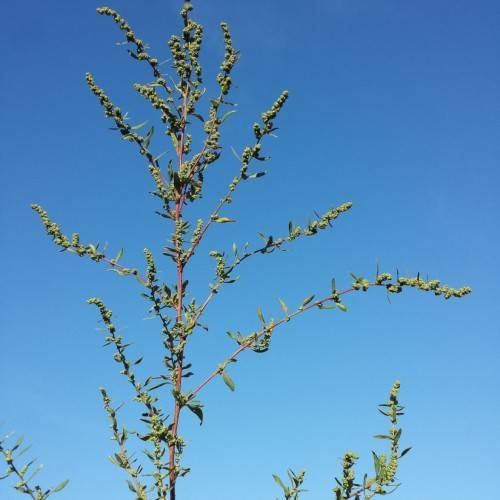
Strict Goosefoot
Chenopodium strictum
Also Known As - Lateflowering GoosefootWatering:
Minimal
Hardiness Zone:
Sun:
full sun,part shade
Leaf:
Yes
Growth Rate:
Low
Drought Tolerant:
Yes
Salt Tolerant:
Yes
Invasive:
Yes
Care Level:
Medium
watering
Strict Goosefoot (Chenopodium strictum) should be watered regularly to ensure a healthy growth rate. It does best when kept evenly moist, but not soggy. Water frequently in the summer during dry periods or when the soil has dried out. During the winter months, water less frequently as the plant does not require as much. Generally, it is best to water once a week throughout the year. Be sure to check the soil moisture before watering and never allow the plant to sit in overly wet soil.
sunlight
Strict Goosefoot (Chenopodium strictum) is a herbaceous, annual plant that is native to the Mediterranean region and usually grows up to 1 meter in height. This plant species prefers full sun exposure. It enjoys bright, direct sunlight from about 8-12 hours a day for optimum growth and flowering. It’s best to keep Strict Goosefoot in a sunny location with midday shade for a few hours, to prevent the leaves from burning. Strict Goosefoot tends to bloom during the summer months between May and August when temperatures are hot and there is plenty of sunlight.
pruning
Strict Goosefoot (Chenopodium strictum) should be pruned in late spring or early summer when the plant is actively growing. Pruning should involve removing dead and damaged branches, along with those that cross over each other and rub against 1 another. The plant should also be thinned out so that the remaining stems are spaced out for better air circulation, and the center of the plant can be opened up to promote new growth. It is best to avoid pruning more than a third of the total plant material at any given time in order to not stress the plant.
